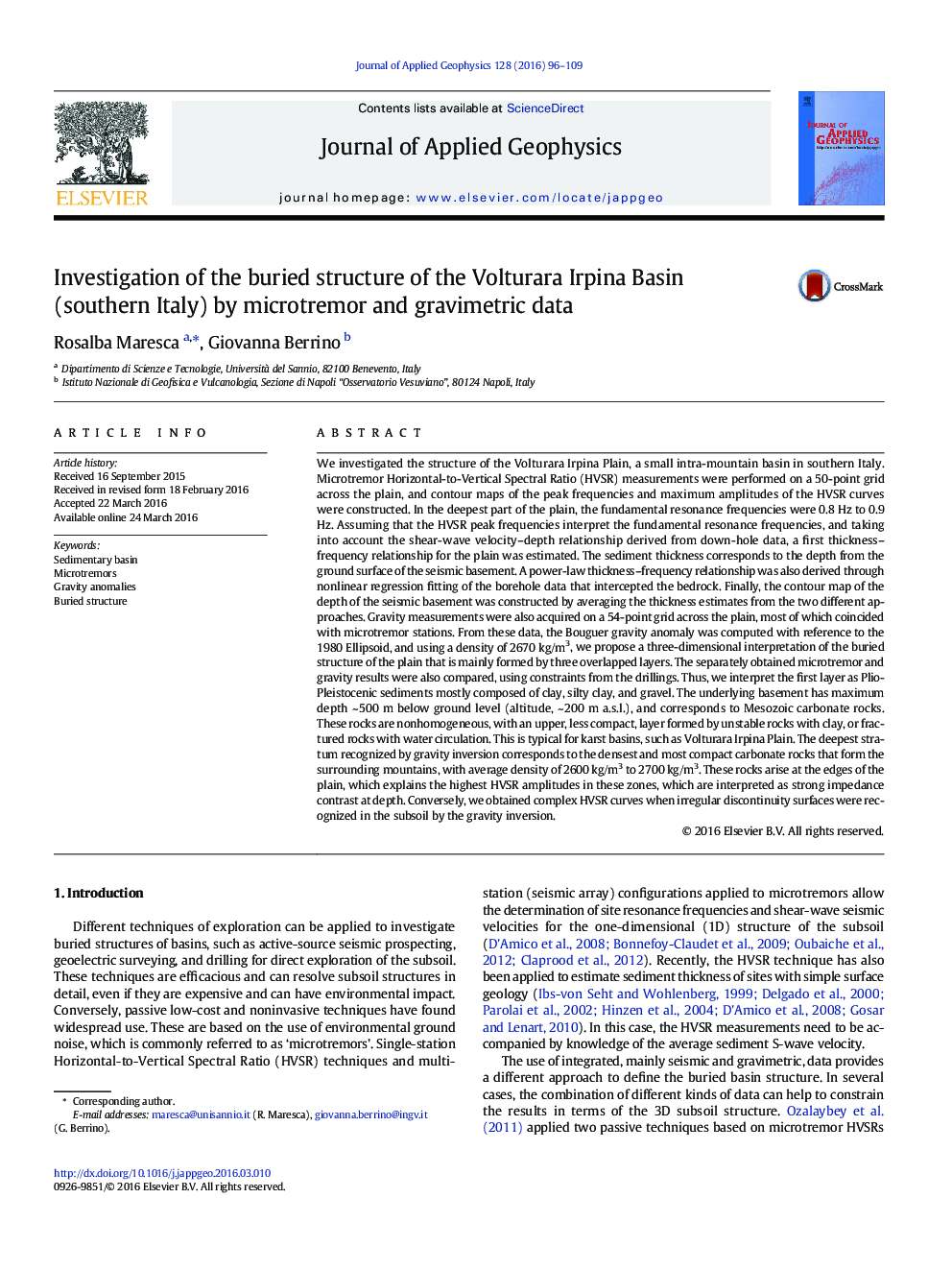| کد مقاله | کد نشریه | سال انتشار | مقاله انگلیسی | نسخه تمام متن |
|---|---|---|---|---|
| 4739789 | 1641123 | 2016 | 14 صفحه PDF | دانلود رایگان |
• We investigated the buried structure of an intra-mountain basin in southern Italy.
• We carried out microtremor and prospecting gravity surveys.
• We separately analyzed and interpreted microtremor and gravity data.
• We provide a joint interpretation of microtremor, gravimetric and borehole data.
We investigated the structure of the Volturara Irpina Plain, a small intra-mountain basin in southern Italy. Microtremor Horizontal-to-Vertical Spectral Ratio (HVSR) measurements were performed on a 50-point grid across the plain, and contour maps of the peak frequencies and maximum amplitudes of the HVSR curves were constructed. In the deepest part of the plain, the fundamental resonance frequencies were 0.8 Hz to 0.9 Hz. Assuming that the HVSR peak frequencies interpret the fundamental resonance frequencies, and taking into account the shear-wave velocity–depth relationship derived from down-hole data, a first thickness–frequency relationship for the plain was estimated. The sediment thickness corresponds to the depth from the ground surface of the seismic basement. A power-law thickness–frequency relationship was also derived through nonlinear regression fitting of the borehole data that intercepted the bedrock. Finally, the contour map of the depth of the seismic basement was constructed by averaging the thickness estimates from the two different approaches. Gravity measurements were also acquired on a 54-point grid across the plain, most of which coincided with microtremor stations. From these data, the Bouguer gravity anomaly was computed with reference to the 1980 Ellipsoid, and using a density of 2670 kg/m3, we propose a three-dimensional interpretation of the buried structure of the plain that is mainly formed by three overlapped layers. The separately obtained microtremor and gravity results were also compared, using constraints from the drillings. Thus, we interpret the first layer as Plio-Pleistocenic sediments mostly composed of clay, silty clay, and gravel. The underlying basement has maximum depth ~ 500 m below ground level (altitude, ~ 200 m a.s.l.), and corresponds to Mesozoic carbonate rocks. These rocks are nonhomogeneous, with an upper, less compact, layer formed by unstable rocks with clay, or fractured rocks with water circulation. This is typical for karst basins, such as Volturara Irpina Plain. The deepest stratum recognized by gravity inversion corresponds to the densest and most compact carbonate rocks that form the surrounding mountains, with average density of 2600 kg/m3 to 2700 kg/m3. These rocks arise at the edges of the plain, which explains the highest HVSR amplitudes in these zones, which are interpreted as strong impedance contrast at depth. Conversely, we obtained complex HVSR curves when irregular discontinuity surfaces were recognized in the subsoil by the gravity inversion.
Journal: Journal of Applied Geophysics - Volume 128, May 2016, Pages 96–109
